In the News
Exclusive: Railroad Stuff - Profiles
May 23, 2007

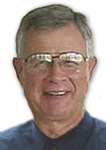
By Noel Widdifield
LSOL.com Managing Editor |
Author
Bio
This is a review of Railroad Stuff, owned by David Newell. Railroad Stuff sells and restores all types of railroad signals and accessories.
|
This is a review of Railroad Stuff, owned by David Newell. Railroad Stuff sells and restores all types of railroad signals and accessories. 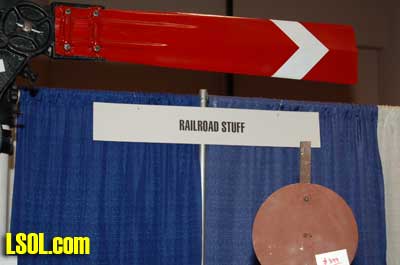 David and Railroad Stuff have been in business for about ten years. The business grew out of David's interest in railroads. He began collecting a few signals for himself. Then some railroad friends saw the signals and asked David where he had gotten them and if he could find a signal for them. 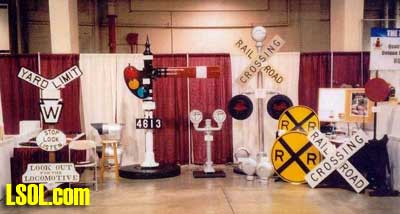 Dave started with a crossing gate at the end of his driveway. He hooked the gate up with a garage remote door opener so that he could make it go up and down remotely. That was so much fun that he next bought a wigwag signal and in his words, "the hobby went crazy after that".
 As a kid, Dave played with Lionel trains and he is still into O gauge. He describes himself as a total rail fan. Because he lives in a remote mountainous area he was able to put signals in his front yard without problems from his neighbors. Apparently, there are no homeowners associations where he lives to remind him of the rules. He found his first signal from a guy he met who was in the re-railing business for railroads in his area. The guy's company cleans up the train wrecks in Southern California for AMTRAK and Union Pacific. When Dave met him, the guy had a crossing gate in his junkyard and after some wheeling and dealing, Dave found himself the owner of the gate. The gate must have come from one of the tracks near the beach in Southern California, because it had a lot of sand in it when he got it. He bought the crossing gate, a switch stand and some ties for landscaping and ended up making the front of his house look like a railroad station. This caused a lot of people to stop in front of his house and take pictures. 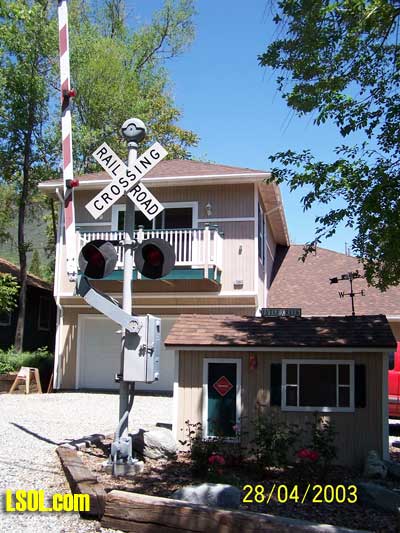
Next he found a bunch of highway flashers in a local junkyard. After restoring them, he began taking them to train shows and found that a lot of people were interested in buying them. This led him to gradually expand the business. 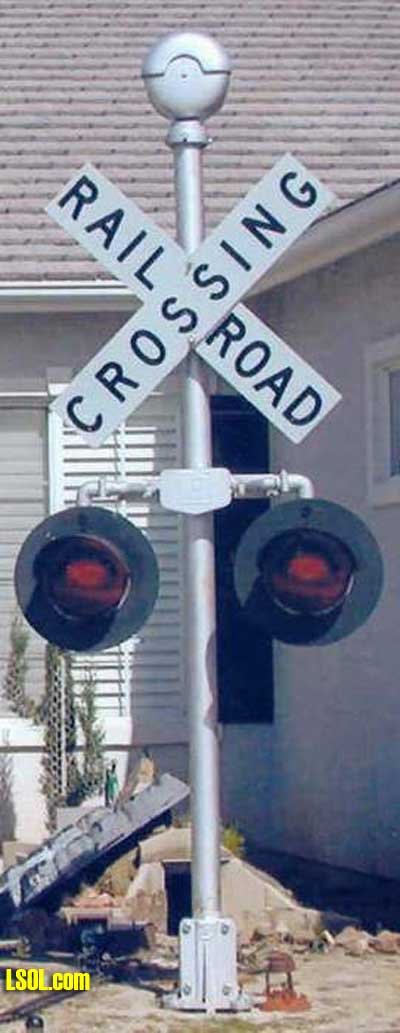 Before getting into the business of finding, restoring and selling railroad equipment, he says he played rock and roll, living out of a suitcase for fifteen years. He then had an art business where he sold framed art to local companies. After that, he and his wife were in the music business for a while. He just gradually found himself in the railroad hobby by helping out friends find old equipment. This allows him to enjoy what he is doing by combining his hobby with his work. 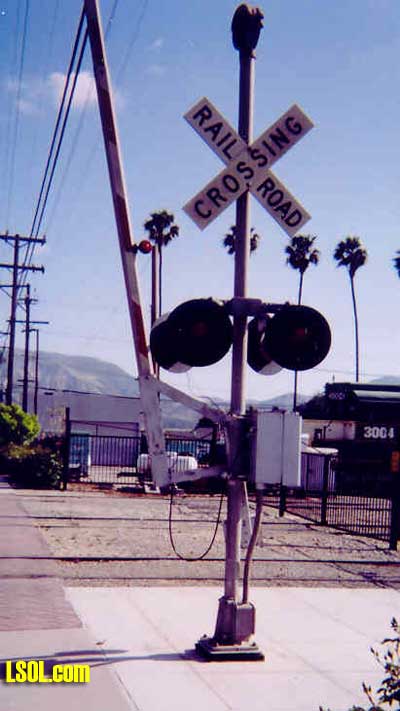
Dave sells antique signals, railroad hardware, signs, bells and lanterns. That includes everything from wigwags that date back to the 1920's, to semaphores and train order signals from the 19th century, all the way up to the new equipment like highway flashers, diesel horns and bells. 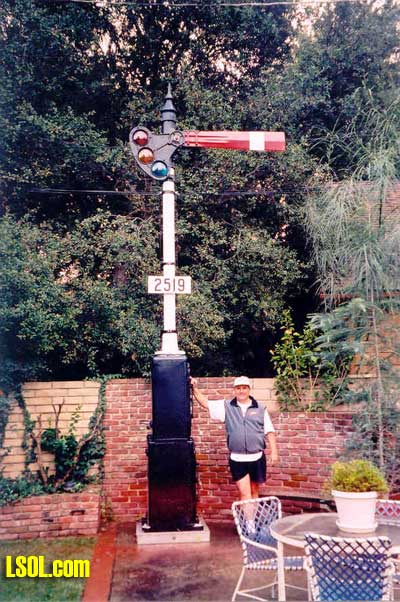 The "modern" equipment includes highway signals that are aluminum and were actually manufactured in the 1970's. All of the cast iron equipment dates back to the 1940's or earlier. He buys the new equipment from a supplier who makes it for current railroads. Dave's company has started to do reproduction equipment. The first of those items is the lighted drumhead signs that were on the rear of the observation passenger cars of the past. These signs are selling very well for them. Dave contracts with a company that spins the metal cans for him. He purchases the plastic lens for the head from a supplier and has the graphics done by another company. All of the parts are sent to his shop and he assembles them.
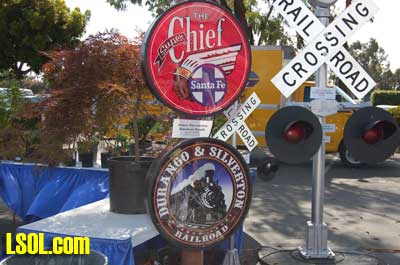 The company has begun to build half scale railroad signals. These are produced from cast aluminum and should be ready for sale as this article goes to "print". To produce these signals, he has developed the tooling and is casting the signals himself. After casting, the signals are brought back to the shop and machined to finish them. 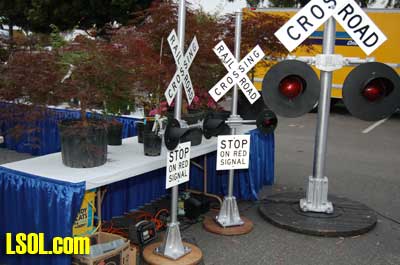 Dave's favorite product is the antique wigwag and he describes it as the "holy grail" of the railroad collectables. According to Wikipedia, a "Wigwag is the nickname given to a type of early 20th century railroad grade crossing signal, so named due to the pendulum-like motion it used to signal the approach of a train. It is generally credited to Albert Hunt, a mechanical engineer at Southern California's Pacific Electric (PE) interurban streetcar railroad, who invented it in 1909 out of the necessity for a safer railroad grade crossing."
 Wigwags are also the favorite of many of the collectors in this hobby. Dave says that a lot of collectors can remember them from their childhood, and he remembers seeing them as a child. He recalls the type they have in Southern California (Magnetic Flagman). He lived next to the tracks and there was one that was visible from his house window. Most of the other signals are from the Midwest and East Coast and he was not familiar with them, as they were no longer used when he was old enough to travel as an adult. Therefore, many of the wigwags he sells were new to him after he got into the hobby. He loves them because of how they look and operate and the nostalgia involved. 
He decides on his next product to introduce by the requests and interest shown in items by his customers. The drumheads are an example of this. He had many customers at shows ask him if he had ever come across the old drumheads as he found other railroad items. As it turns out, most of the old drumheads have been lost because they were originally made from glass. There weren't very many of the drumheads originally made and the ones that have survived sell for thousands of dollars because they are so rare. This caused him to begin to look into making reproductions of them. That led to the reproductions he now sells. 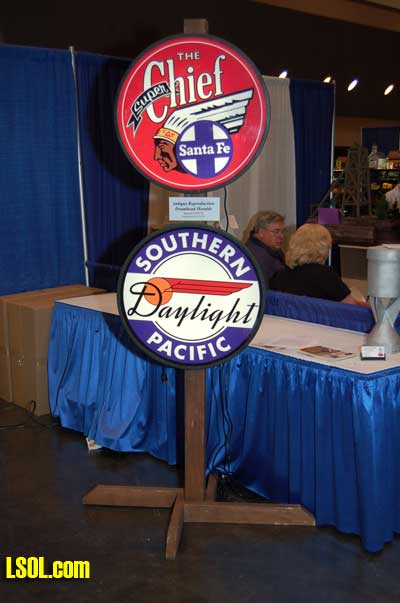 If the miniature crossing signals are successful, Dave plans to develop half-scale wigwags. They would be about six feet tall and be in a price range that would be very affordable. 
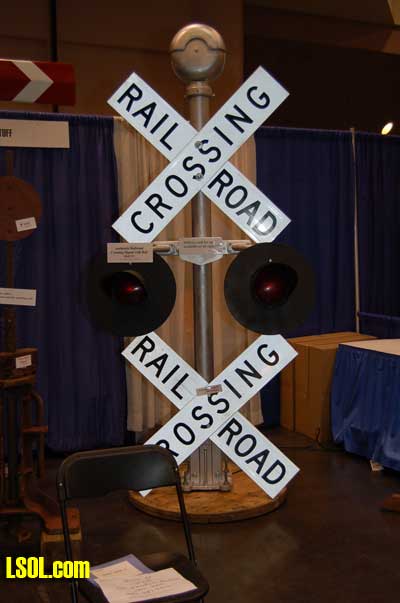 Dave is the only employee in the company and subs out most of the work. He has a metal shop, a welding shop, and a plastics shop that are all subcontractors. He brings all of the components together and has someone assemble the final product. All of this operation, including the sub-contractors, is located in the Southern California area. 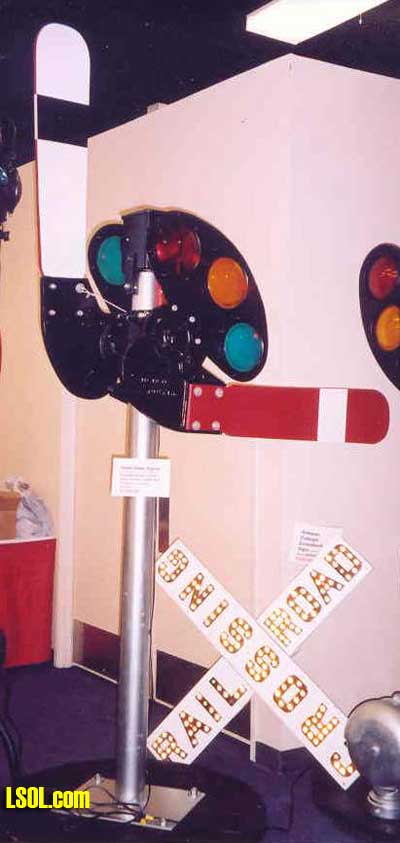
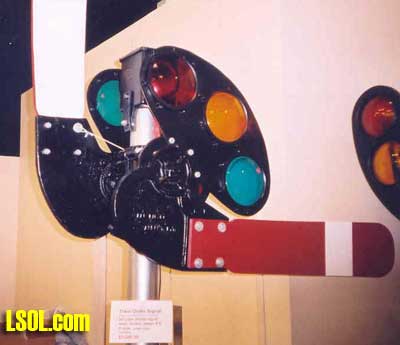 Railroad Stuff also sells railroad signs found along the railroad to remind the engineer to blow the whistle or for warning railroad workers about the dangers found on a railroad. 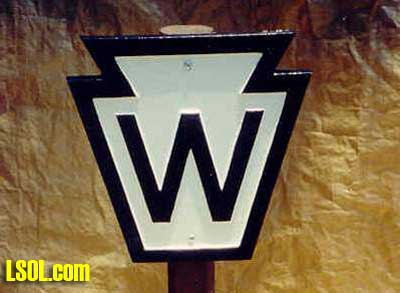
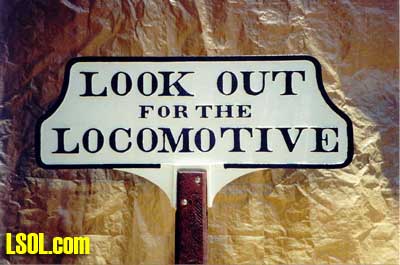 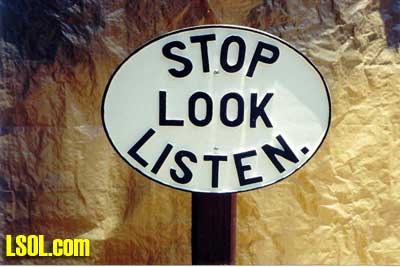
In addition to the National Garden Railway convention in Santa Clara lat year, David attends The Big Train Show. 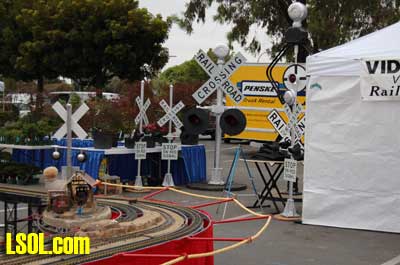 Both were good shows for him this year. After the National Convention he was heading out to the National Narrow Gauge Convention in Durango, Colorado. He says that these shows have a very good clientele and people are ready to spend money when they come. The attendees have waited all year for the shows and are ready to buy things when they get there. He says that when people see his equipment they usually buy. He says he has never been at a show where someone didn't buy the big signal he always brings to get people's attention. The drumheads are selling very well. He explained that the switch stands are very popular at the shows. He puts mailboxes on the switch stands for many people. Many people like to have their address on the targets on the stands. 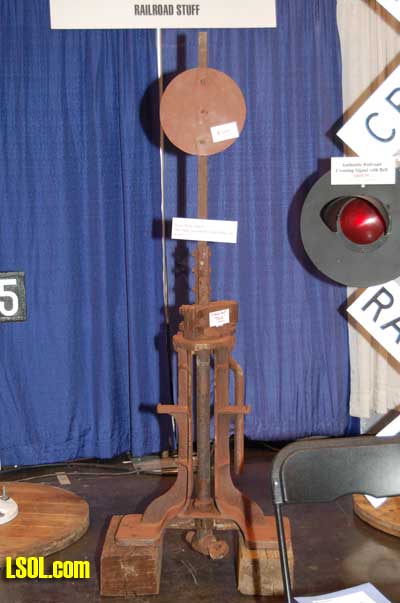
Many of his customers start with the purchase of a highway-crossing signal and then over the years buy some additional equipment and eventually work their way up to one of the large signals or wigwags.  He probably will go back to the same shows next year and will expand to some of the model railroad shows and the O gauge shows. He says his products appeal to just about anybody that is into trains. The shows bring a lot of traffic back to his website and he sells pretty well from the website. He also sells on eBay and that brings people to his website as well. The traffic on his website keeps his phone ringing. 
 His favorite part of railroading is meeting other people with the same interest that he has. These people bring their kids to shows and he loves watching the kids eyes when they see the wigwag or crossing signal start up. The greatest thing is seeing people who have the same love that he has for railroads. "The bonding is cool" according to Dave. He also likes to ride the trains. He has been on several tourist railroads. The tourist trains fascinate him more than riding AMTRAK. He mentioned Durango and Silverton railroad as a favorite and was heading out to ride the Cumbres and Toltec the following week. He loves to watch people riding on the train. He says that when they get on board that their whole personality changes. They become more friendly and relaxed. He noted that when people get on a train they wave out the window and the people watching wave back. He says that "you don't see that anywhere else. People don't wave out their car windows at people. It is magic." 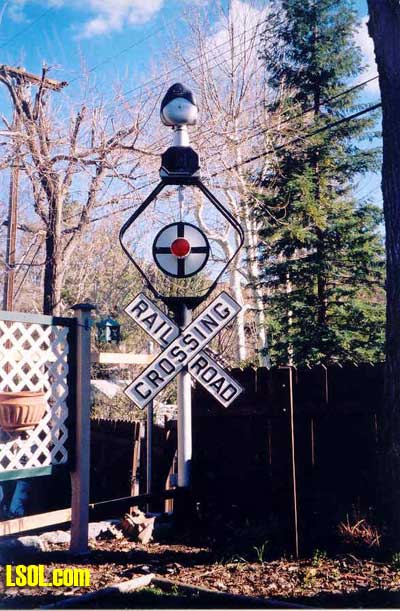
He does a lot of rental and prop business for museum and movies. They contact him to obtain some of the products he sells. He was recently contacted by Travel Town in Los Angeles to put up a semaphore. 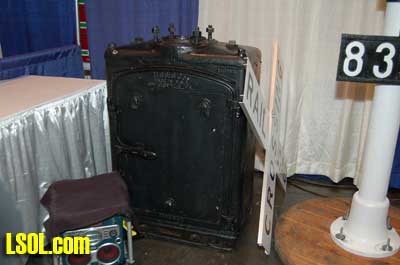 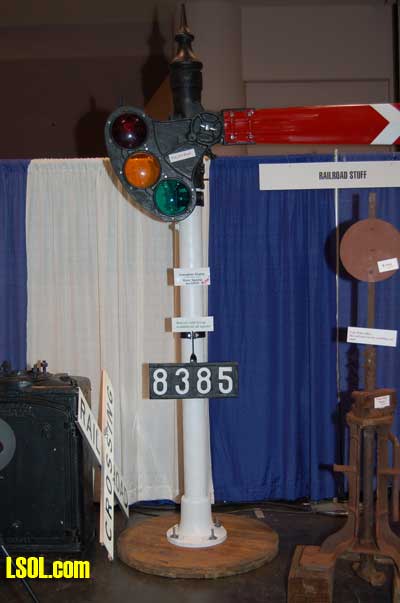
He sold a very rare Griswold rotating signal to Niles Canyon Railroad museum in the San Francisco Bay area. He gets a lot of interest from museums and that is becoming a larger part of his business. He also gets calls from movie studios for his products. The website generates the interest in his products from the museums and studios. He had a call from ER for a crossing gate and supplied switch stands and some other things for a commercial using ducks and trains. 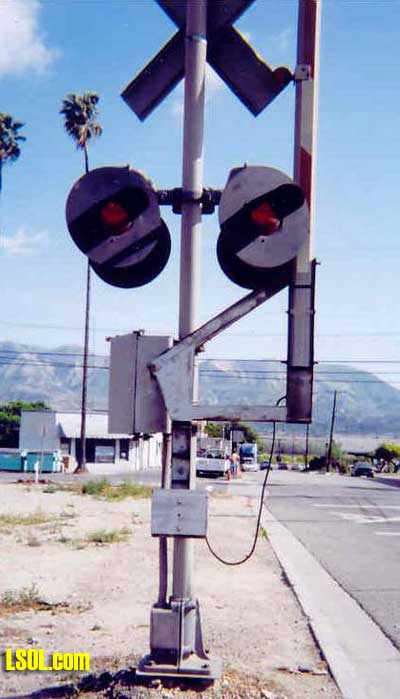 He runs O gauge trains. He has a lot of MTH Premier line trains. That is O scale that runs on three-rail. His layout is being re-done so he was reluctant to send pictures of his railroad. He explained that it was sort of torn up. He is in the process of obtaining his own caboose. It is a wooden one built in 1911. He has a lot next to his house where he is putting a little railroad park. The track is going in and the caboose will be moved in soon. He says that is his next three-year project. wrrswigway2.jpg"> Dave's business is at the far end of Large Scale trains, but he offers something that all of us could put in our yard or out near the Outdoor Railroad that would certainly give visitors something to talk about. His "Stuff" represents a part of Large Scale trains that many of us would like to have but haven't gotten around to purchasing yet. It is always nice to have another item to add to our "must have" list. Railroad Stuff
P.O. Box 108
Lytle Creek, California 92358
Website: www.railroadstuff.com
Top of Page
|



